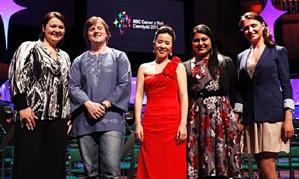Beethoven Missa Closes Symphony Season
Similar in grandeur and majesty, Beethoven's Ninth Symphony and Missa solemnis (Solemn Mass), both from 1824, are virtually at opposite ends of the composer's hit parade. The Ninth is performed constantly around the world, but the Missa comes along once or twice in an orchestra's lifetime.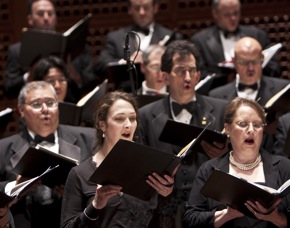
San Francisco Symphony, which is closing its 99th season with the work, is perhaps an exception, having given nine series of concerts between 1932 and 1995 featuring Missa — the first conducted by Hans Leschke (organizer of the San Francisco Municipal Chorus in 1922), and the most recent by Herbert Blomstedt (who also headed the 1986 performances). Music directors Josef Krips (1967, 1970) and Enrique Jordá (1956, 1963) led performances, in addition to guest conductors Roger Norrington (1990) and Neeme Järvi (1984).
And yet the work is rare enough that the Symphony's well-experienced chorus master, Ragnar Bohlin, will have prepared it for the first time. "What I know," Bohlin says, "is that it is wonderful music, amazingly inventive and rich. Also a challenge to any chorus, with its high tessitura and the amount of music to sing."
The 80-minute work is difficult to perform and demands a full orchestra, large chorus, and expert soloists, both vocal and instrumental. Even after nearly two centuries, Beethoven's experimentation and innovations with harmonies and tempos are daunting.
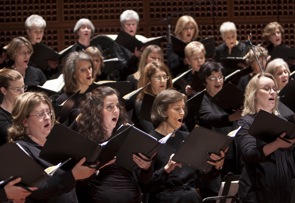
Musicologist Donald Francis Tovey has said: "Not even Bach or Handel can show a greater sense of space and of sonority. There is no earlier choral writing that comes so near to recovering some of the lost secrets of the style of Palestrina. There is no choral and no orchestral writing, earlier or later, that shows a more thrilling sense of the individual color of every chord, every position, and every doubled third or discord."
For Michael Tilson Thomas, who will lead these performances, acquaintance with the work goes back to his school years at UCLA when he played second oboe under the baton of Lukas Foss, "who said things like 'Let Beethoven take you into his sweaty embrace.'
"It's a fascinating piece," MTT remarks, "as Beethoven seems to be struggling with the issue of whether it is possible to make contrapunctal music as passionate and emotionally expressive as other forms of music, similar to what Schubert dealt with in the last years of his life. These concerts will make a wonderful capstone to the year."
The Missa is a prominently choral work, and the singers are excited as they get ready to perform it.
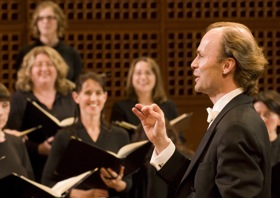
Soprano Elizabeth Blodgett is impressed by the "deep spirituality of a man driven to despair by his profound deafness, culminating in a piece of unbelievable depth and passion, as exemplified by the extraordinary chromaticism in the Crucifixus section to denote the death of Jesus on the Cross. For me, to be doing such a piece with this orchestra and a conductor like MTT, who has such empathy with Beethoven's vision, is truly a marvelous experience, both musically and spiritually. Despite the Herculean vocal demands Beethoven places on us all, in particular the sopranos, the effort is well worth it."
Bass Chung-Wai Soong regards the Missa as "a virtuosic masterpiece," towering in the choral repertoire. The veteran chorus member says he has been looking forward to sing the Missa for many years, and hopes it will be "kept in the repertoire more often and for many years."
Tenor Kevin Gibbs speaks of MTT working on preparations since the middle of the last season:
He has spoken with us about his year-long study of the score and trying to make sense of this late-period Beethoven score in the context of all of his late period works. His interest and enthusiasm towards this work has been infectious and has influenced the focus of all of us within the San Francisco Symphony family in preparing this work for our audience.This is a complex and awkward piece where Beethoven experiments wildly with harmonies, phrase lengths, and text painting. Both Ragnar [Bohlin] and MTT bring an amazing focus to the detail in this work. MTT demonstrated his interest with a fully prepared score presented to Ragnar to assist the chorus in the preparation. Microphrases, dynamic emphasis, and text highlighting are all in MTT's prepared score, and the chorus has focused intensely on bringing his instructions out in the score.
The Band Behind the Leader of the Opera Band
The great orchestral performances at the San Francisco Opera's current Ring of the Nibelung are usually attributed, in journalistic shorthand, to the conductor, Donald Runnicles. While he deserves the praise heaped upon him, Runnicles is working with a large, incredibly hardworking orchestra, every member of which should get credit.Short of that, here are at least the principals:
Laura Albers is concertmaster for the three cycles. Virginia Price is principal of the second violin section, while Carla Maria Rodrigues heads the violas.
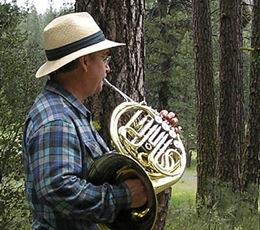
David Kadarauch is principal cellist, performing some important solos in the Ring; Thalia Moore and David Budd are associate and assistant principals, respectively. Joseph Lescher is principal bass.
In the woodwind section, Julie McKenzie heads the flutes, Stephie McNab plays the piccolo, and Mingjia Liu is principal oboe (another important solo instrument). Janet Popesco Archibald is on English horn while Jose Gonzalez Granero heads the clarinets. Rufus Olivier is principal bassoon.
In the all-important brass section, which has done so well in the many difficult, transparent Ring passages, William Klingelhoffer and Kevin Rivard are horn coprincipals (heard throughout the operas); Adam Luftman is principal trumpet; McDowell Kenley is principal trombone; David Ridge is on brass trombone, Zachariah Spellman on bass trombone and cimbasso.
John Burgardt is the timpanist, supported by Richard Kvistad, who is also principal of percussion. Olga Ortenberg Rakitchenkov plays the harp. Making it all possible are Orchestra Manager Tracy Davis and Librarian Lauré Campbell.
Bravi to all, orchestra and chorus, taking the final bow onstage on Sunday at the conclusion of Götterdämmerung.
Music Critics Sing to Life Member Emeritus
"They sang Happy Birthday to me Friday, and twice on Saturday. Best choral rendition of it I have ever heard. I was touched."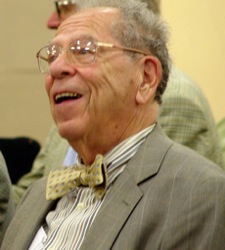
SFCV founder Robert Commanday turned 89 on Saturday, and he was serenaded by members of the Music Critics Association of North America, at their convention here on the occasion of San Francisco Opera's Ring cycle.
Commanday was president of the organization from 1980 to 1984, and has been named life member emeritus.
He and his cellist wife, Mary Commanday, produced the first issue of Classical Voice in September 1998, after Commanday retired as chief music critic of the San Francisco Chronicle. Connecting that job with the upcoming San Francisco Symphony performances of Beethoven's Missa solemnis, Commanday writes:
I prepared (trained the chorus) for the SFS Missa solemnis and also for the Oakland Symphony; the last I will never forget. That wonderful Oakland Symphony Chorus learned it in seven rehearsals, might have been six. Learned it well.Commanday says of the convention:I credit the SF Symphony Missa solemnis with Alfred Frankenstein's hiring me as his successor at the Chronicle. His review of that Missa Solemnis went on and on about everything, including the soloists, and gave the chorus just a nice couple of sentences, possibly one.
I wrote him a lengthy letter pointing out that it is significantly a choral work first, that the soloists, however celebrated, have a relatively minor role. I went on and on. I am sure that Alfred deposited my letter in the round file, as he did with every correspondence that came from less than important people. But that letter was the only evidence he had that I could in fact, write.
The MCANA is recovering from the shock of the abolishment of most newspaper music critic positions. There are only two full-time or staff critics in California, at the L.A. Times and the S.F. Chronicle. Most states have none now.SFCV Executive Director John Robinson and Lisa Hirsch were among the panelists at the MCANA meetingThe practitioners have adjusted to earning a living through multiple activities and serve music criticism by freelance work, postings on the Internet, developing Web sites, and serving Web journals that are increasing in number.
The MCANA is developing by attracting and serving this new kind of music critic and is itself seeking establish a national presence through a national journal, Classical Voice America, that would produce reviews, news, and articles of regional and national interest. The organization is solvent and optimistic.
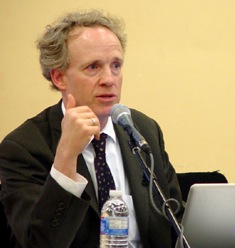
Robinson said:
While excellence in journalism is critically important, it is no longer enough to be relevant in today's busy lives. In the same way, today's emerging musicians are honing their presentation skills to deliver more than just a fine performance. They are becoming social network specialists, video producers, actors, and spokespeople.Musical excellence alone does not make a performer relevant any longer. Journalists, too, need to become proficient in harnessing the power of social media, writing for a broader audience, and thinking carefully about visual enhancements and how their prose will look in print and online.
A Different, Illustrious Summer Intensive for Young Musicians
Speaking of Bob and Mary Commanday, they are prominent supporters of the Young Musicians Program at UC Berkeley, along with Frederica von Stade, André Watts, Frank Foster (Ellington's arranger of many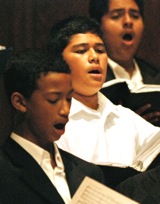
A chief reason is the seven-week intensive program for YMP students, June 25 through Aug. 14. Public (and free) events include an open house, 9 a.m. to noon, July 29, in Morrison Hall (home of UC Berkeley's Music Department); and student concerts in Hertz Hall, Aug. 12 and 14.
Students, ages 10–18, are participating from 8 a.m. to 6 p.m., five days a week. They start in the morning with a chorus rehearsal, then they have two lessons a week for each instrument they play, small ensemble rehearsals, orchestra rehearsals, music theory classes, language diction classes for singers, individual practice sessions, and master classes by visiting notables. Weekly recitals in Hertz Hall demonstrate what they have been working on.
This summer, Ruben Capriles, a graduate of Venezuela's El Sistema and a protégé of conductor Marin Alsop, is returning for his second year to direct the new orchestral program.
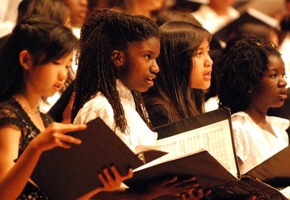
During the last week of the summer session, four final concerts will be given in Hertz Hall, showcasing the best student performances.
As many as 90 kids participate in the program, having auditioned to get in. YMP director Daisy Newman has been expanding the program since she took charge in 2003.
The big difference between this and other summer music programs: All YMP students are on full scholarship, qualifying on demonstrable fiscal need, as well as on their talent.
It is an outreach service of the university that began in 1968. One proof of the program's astonishing success is that for the last 23 years, all the graduates have gone to college, most on scholarship.
Says instructor and YMP evangelist James Meredith: "We are talking about the best schools and conservatories in the country. I have students currently at Juilliard, Manhattan, Oberlin, San Francisco of Music, and Cleveland Institute. My four graduating singers this year are going to Ann Arbor, Manhattan, UC Irvine, and University of the Pacific.
"I can tell you that this program has changed many lives. A lot of these kids are the first in their families to go to college, and many have family stories that would break your heart."
The mission of the Young Musicians Program is to identify musically gifted students who cannot afford the specialized training essential for development of their abilities, and to provide them with comprehensive music education, academic reinforcement, and personal guidance, on a full-scholarship basis.
According to Commanday:
The Young Musicians’ Program is the most important educational outreach to have emanated from the UC Berkeley’s Music Department in its history, a lustrous accomplishment sustained by the Chancellor and the community. The education in music it provides less privileged youth, and its concomitant discipline and motivating spirit, have carried succeeding classes into higher education and careers, making the program an inspiration and archetype.
Two Merolini Among 'Singers of the World'
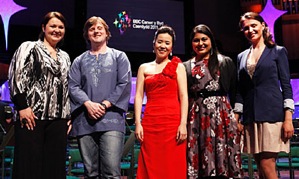
Hye Jung Lee, a participant in the Merola Program in 2010, and Leah Crocetto, Merola 2008 and a current Adler Fellow, were among the 20 young artists vying for Cardiff Singer of the World competition titles last week. They were selected from more than 600 singers from 68 countries.
Lee, representing, South Korea, was one of the five finalists. After Zerbinetta's stratospheric aria from Strauss' Ariadne auf Naxos, the soprano sang "I Am the Wife of Mao Tse-tung," from John Adams' Nixon in China, the role she’s scheduled to perform next summer in San Francisco’s War Memorial Opera House. The aria "saw the hall erupt with delight," according to one report.
Unusual repertory came also in mezzo Olesya Petrova's winning performances and in Ukrainian baritone Andrei Bondarenko, who added to Mozart and Prince Yeletsky's aria from Tchaikovsky's Queen of Spades an aria from Korngold's Die tote Stadt, as well as songs by Schumann and Sviridov, which won him the Song Prize.
Crocetto was among Song Prize competitors. Watch her competition performance in Liszt's "Pace non trovo."
The Moldovan soprano Valentina Nafornita, at 24 the youngest competitor, won the Audience prize.
For Lee, Nixon in China will be her mainstage debut here. In the Merola Program, she performed Giannetta (from L'elisir d'amore) and scenes from Ariadne auf Naxos (Zerbinetta) and Britten's Midsummer Night's Dream (Tytania).
Ragazzi's 'Animal Crackers,' Girls Chorus to Cuba
Just back from its tour to Cuba, Ragazzi Boys Chorus presents its summer program, "Animal Crackers," what it calls a "cheerful collection of modern and Renaissance compositions inspired by wildlife," at 7 p.m., June 24, in the Menlo-Atherton Performing Arts Center.The concert title is from a series of Ogden Nash poems set to music by Eric Whitacre. They include "The Canary," "The Kangaroo," and "The Eel." From the roots of modern choral music comes Renaissance composer Clément Janequin's Song of the Birds, plus pieces from the Cuban tour, such as Guatanamera, Juramento, and A Pescar Camaron.
Filling the void left by the boys in Cuba, the San Francisco Girls Chorus will tour the island country, July 2-10, as part of the U.S. Special Interest Section Headquarters Fourth of July celebration and concerts in Havana, Santa Clara, and Matanzas.
The repertoire includes Cuban-American composer Tania León's newly commissioned Rimas Tropicales, which received its world premiere at the SFGC 2010–2011 home season closing concerts on June 9 and 11. A free Cuba Tour Send-Off Concert will be held at 8 p.m., July 1, at Calvary Presbyterian Church in San Francisco.
Met Lucia, Comte Ory on TV
The Metropolitan Opera's much-acclaimed productions of Donizetti's Lucia di Lammermoor and Rossini's Le Comte Ory will be telecast on PBS stations in June and July.In the Bay Area, KQED-TV, channel 9, has scheduled Lucia di Lammermoor — with Natalie Dessay and Joseph Calleja — at noon next Sunday, June 26; and the Rossini comic opera — with Juan Diego Florez, Diana Damrau, and Joyce DiDonato — at noon on July 31.
Choral Beauty Is in the Nationality of the Beholder
S.F. Symphony Chorus Director Ragnar Bohlin comments on the Gramophone magazine's new list of "20 Best Choirs of the World":It created quite some stir on the U.S. choral scene since not one choir from this country was listed. Instead there was a heavy bias for British ensembles [by the publication based in England]. Scandinavia's largest music magazine, the Swedish magazine OPUS, commented on this in a recent issue, and I am happy they mentioned both the SFS Chorus and Chanticleer, though I must say I find it a bit amusing [that] the OPUS' alternative list contains no less than five Swedish choirs.Bohlin concludes the message with a Swedish smiley, which looks like this — :)^ (^ pointing north).
Of the 20 choirs no less than 13 have their home base on British soil, 10 of them in London, where Gramophone is based.(Veteran readers may remember frequent references in this column to a Stuttgart-based publication's annual choice of Stuttgart Opera as the world's best.)
At the top of the Gramophone list is John Eliot Gardiner's Monteverdi Choir, closely followed by Stephen Layton’s Polyphony. The Swedish Radio Choir is, as the only Nordic ensemble on the list, represented as No. 10.
The full list:
1. The Monteverdi Choir, England
2. Polyphony, England
3. The Cardinall's Musick, England
4. The sixteen, England
5. Choir of Trinity College, Cambridge, England
6. Wells Cathedral Choir, England
7. Collegium Vocale Gent, Belgium
8. Accentus, France
9. RIAS Kammerchoir, Germany
10. The Swedish Radio Choir, Sweden
11. The Dunedin Consort, Scotland
12. Choir of King's College, Oxford, England
13. The Tallis Scholars, England
14. Choir of Ne College, Oxford, England
15. Les Arts Florissants, France
16. Westminster Abbey Choir, England
17. The Balthasar-Neumann Chor, Germany
18. Stile Antico, England
19. Arnold Schoenberg Chor, Austria
20. I Fagiolini, England
Says Olof Esbjornsson, of Opus:
... if the Gramophone still has set its mind on making a top list, one wishes that for the next time they would raise their eyes from their navel by an inch. London stopped being the economic and political center of the world a hundred years ago. It may still be the center of the choral world, but far from the degree to which the English themselves would like to believe.
Ballet News in the Off-Season
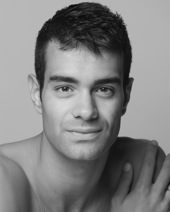
San Francisco Ballet has announced four promotions, as well as the addition of six new apprentices and two new company members for the 2012 season.
Soloist Vito Mazzeo has been promoted to principal dancer; Patricia Keleher, Raymond Tilton, and Caroline Diane Wilson, apprentices during the last season, will join the ranks of the corps de ballet, along with former San Francisco Ballet School trainees Francisco Mungamba and WanTing Zhao.
Born in Vibo Valentia, Italy, Mazzeo began his training at La Scala Ballet School in Milan. In 2005, he joined the Royal Ballet where he danced for several years, prior to joining Rome Opera Ballet in 2008. In 2010, Mazzeo received the Premio Positano Leonide Massine Award for Best Italian Dancer as well as the Danza & Danza Award for Best Dancer of the Year.
As a soloist in San Francisco, Mazzeo performed the role of Albrecht in Giselle. His repertory with the company also includes George Balanchine's Symphony in C, Helgi Tomasson's Trio, William Forsythe's Artifact Suite, Kenneth MacMillan's Winter Dreams, Wayne McGregor's Chroma, and Christopher Wheeldon's Number Nine.

